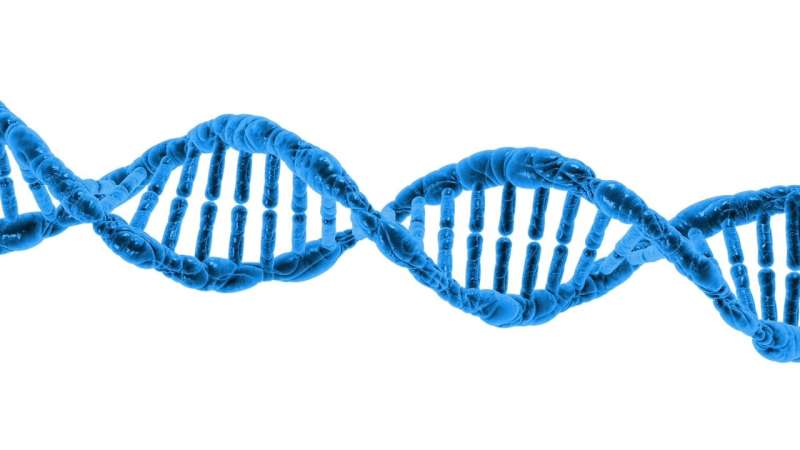Epidemiologists develop new tool for measuring the pace of aging across the life course

A study just released by Columbia University Mailman School of Public Health is reporting a blood-DNA-methylation measure that is sensitive to variation in the pace of biological aging among individuals born the same year. The tool—DunedinPoAm—offers a unique measurement for intervention trials and natural experiment studies investigating how the rate of aging may be changed by behavioral or drug therapy, or by changes to the environment. The study findings are published online in the journal eLife.
"The goal of our study was to distill a measurement of the rate of biological aging based on 12-years of follow-up on 18 different clinical tests into a blood test that can be administered at a single time point." said lead author Daniel Belsky, Ph.D., assistant professor of epidemiology at Columbia Mailman School and a researcher at the Columbia Aging Center.
Midlife adults measured to be aging faster according to the new measurement showed faster declines in physical and cognitive functioning and looked older in facial photographs. Older adults measured to be aging faster by the tool were at increased risk for chronic disease and mortality. In other analyses, the researchers showed that DunedinPoAm captured new information not measured by proposed measures of biological aging known as epigenetic clocks, that 18-year-olds with histories of childhood poverty and victimization showed faster aging as measured by DunedinPoAm, and that DunedinPoAm predictions were disrupted by a caloric restriction intervention in a randomized trial.
In a 2015 paper, Belsky and colleagues at Duke University, who also collaborated on this study, tracked a battery of clinical tests measured in 954 members of the Dunedin Study birth cohort when the participants were 26, 32, and 38 years old to measure their rate of aging (PNAS paper). A striking finding of that earlier study was that the rate of biological aging was already highly variable in young adults who had not yet developed chronic disease. But the measure the researchers developed in that earlier study, called "Pace of Aging", required long-follow-up time and in-depth clinical assessment. "It wasn't very useful for studies that need to test the impact of a new drug or lifestyle intervention in a matter of a few years," said Belsky.
In their new study, the researchers aimed to develop a blood test that could be given at the start and end of a randomized controlled trial to determine if the treatment had slowed participants' pace of aging. Slowing the pace of aging is an emerging frontier in medical research as a novel approach to preventing multiple chronic diseases.
The authors' analysis focused on DNA samples derived from white blood cells. They analyzed chemical tags on the DNA called methylation marks. DNA methylation is an epigenetic process that can change the way genes are expressed. DNA methylation marks change as we age, with some marks being added and others lost. "We focused our analysis on DNA methylation in white blood cells because these molecular markers are relatively easy to measure and have shown great promise in previous research on aging," explained Belsky.
The study included analysis of data from the NZ-based Dunedin Study, the UK-based Understanding Society and E-Risk Studies, the U.S.-based Normative Aging Study, and the CALERIE randomized trial.
Previous studies have attempted to measure aging by analyzing DNA methylation differences between people of different chronological ages. "One limitation of this approach, noted Belsky, is that individuals born in different years have grown up under different historical conditions, with a possibility of more exposure to childhood diseases, tobacco smoke, airborne lead, and less exposure to antibiotics and other medications, as well as lower quality nutrition, all of which affect DNA methylation. An alternative approach is to study individuals who were all born the same year, and find methylation patterns that differentiate those who have been aging biologically faster or slower than their same-age peers."
The authors used a machine-learning technique called "elastic-net regression" to sift through data on more than 400,000 different DNA methylation marks to find the ones that related to the physiological changes captured in their Pace of Aging measure. In the end, the analysis identified a set of 46 methylation marks that, together, measured Pace of Aging. The 46 marks are combined together according in an algorithm the researchers named "DunedinPoAm" for Dunedin (P)ace (o)f (A)ging in (m)ethylation. The average person has a DunedinPoAm value of 1—indicating 1 year of biological aging per chronological year. Among Dunedin Study participants, the range of values extend from just above 0.6 (indicating an aging rate nearly 40 percent slower than the norm) to nearly 1.4 (indicating an aging rate 40 percent faster than the norm).
More information: Daniel W W Belsky et al, Quantification of the pace of biological aging in humans through a blood test, The DunedinPoAm DNA methylation algorithm, eLife (2020). DOI: 10.7554/eLife.54870





















